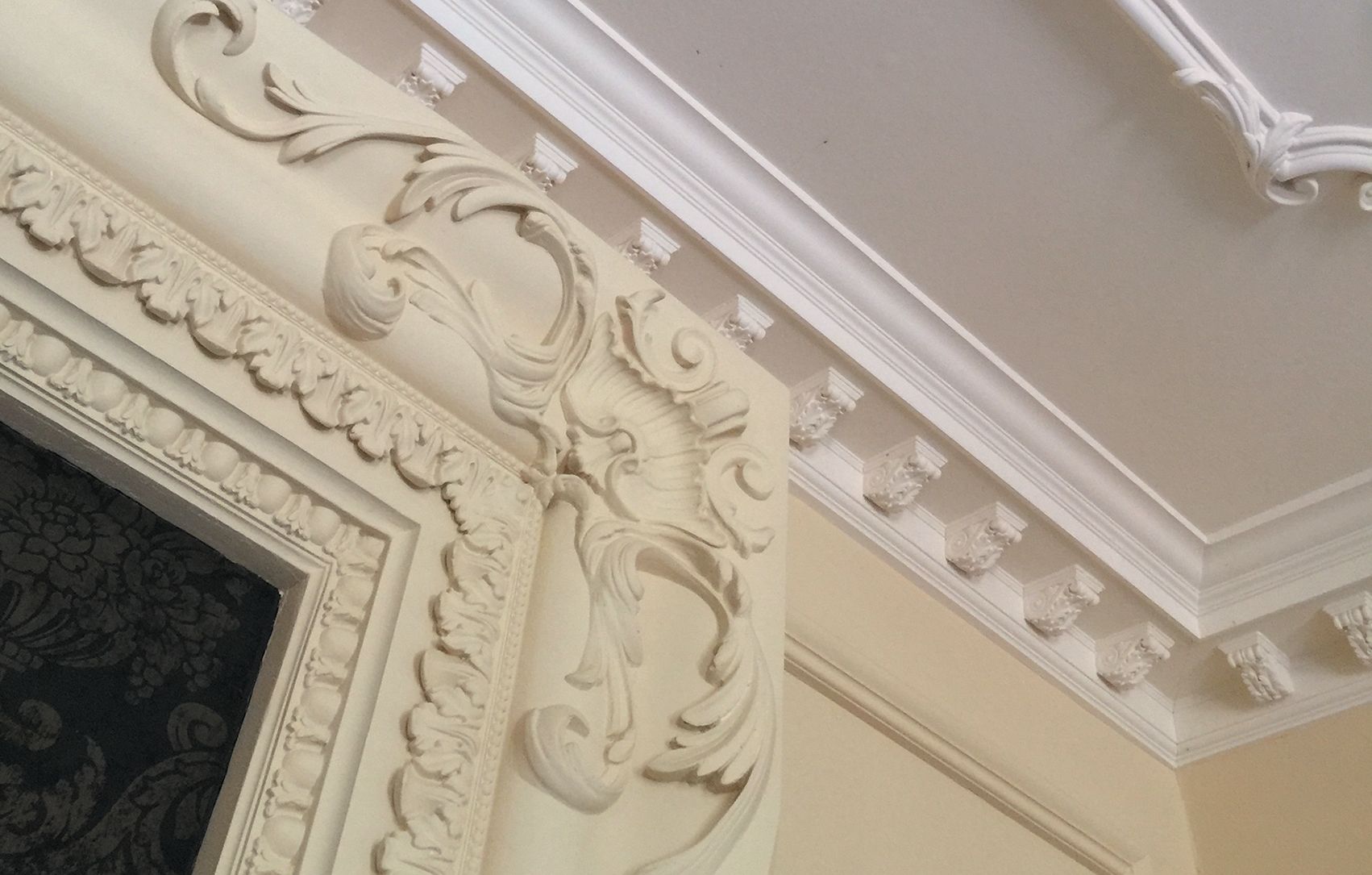Why Plasterwork Fails — and How to Prevent It
By Ian Waller
In my career, I’ve seen my fair share of cracked cornices, sagging ceilings and failed enrichments. Sometimes the causes are obvious. Often, they’re not. But in almost every case, failure could have been prevented - with better planning, better materials, or better advice.
One common issue is inappropriate material use. For instance, using modern gypsum-based products where lime plaster would be more suitable - especially in listed buildings - can create compatibility issues. At Tyringham Hall, we advised on a fibrous plaster alternative only after carefully assessing cost and timing against conservation needs. The result looked authentic while meeting practical constraints.
Another culprit is poor detailing. Lighting troughs, access hatches, or ceiling coffers often require complex coordination with mechanical and electrical systems. If these aren't resolved early, the mouldings become an afterthought - squeezed in or cut down to fit. At Buxmead, we solved this by working in section drawings and producing mock-ups, ensuring the lighting and air conditioning sat seamlessly within the coffered design.
Installation is another flashpoint. I’ve seen beautifully designed elements let down by poor fixing methods or rushed sequencing. Heavy enrichments need proper structural support, especially in complex geometries. At Juniper Hill, for example, we carefully staged the dome and column installations to allow accurate setting out from the existing rooflight.
Perhaps most damaging, though, is the failure to involve a specialist early enough. Plasterwork isn’t just decoration - it’s part of the architecture. Whether in restoration or new build, it should be planned, specified and delivered with the same attention as any other major component.
My role is to help clients avoid these pitfalls. To bring a practical, experienced eye to the process. And to ensure that the final result doesn’t just look right on day one - but lasts for decades to come.




